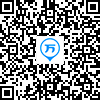| 第 1 页:Passage One |
| 第 2 页:Passage Two |
|
长按/扫描下面二维码
|
长按/扫描下面二维码
|
2017年12月四六级真题答案![]() ※ 微信对答案 ※ 万题库估分
※ 微信对答案 ※ 万题库估分
Section C
Directions: There are 2 passages in this section. Each passage is followed by some questions or unfinished statements. For each of them there are four choices marked A), B), C) and D). You should decide on the best choice and mark the corresponding letter on Answer Sheet 2 with a single line through the centre.
Passage One
Questions 46 and 50 are based on the following passage.
That people often experience trouble sleeping in a different bed in unfamiliar surroundings is a phenomenon known as the “first-night” effect. If a person stays in the same room the following night they tend to sleep more soundly. Yuka Sasaki and her colleagues at Brown University set out to investigate the origins of this effect.
Dr. Sasaki knew the first-night effect probably has something to do with how humans evolved. The puzzle was what benefit would be gained from it when performance might be affected the following day. She also knew from previous work conducted on birds and dolphins that these animals put half of their brains to sleep at a time so that they can rest while remaining alert enough to avoid predators (捕食者). This led her to wonder if people might be doing the same thing. To take a closer look, her team studied 35 healthy people as they slept in the unfamiliar environment of the university’s Department of Psychological Sciences. The participants each slept in the department for two nights and were carefully monitored with techniques that looked at the activity of their brains. Dr. Sasaki found, as expected, the participants slept less well on their first night than they did on their second, taking more than twice as long to fall asleep and sleeping less overall. During deep sleep, the participants’ brains behaved in a similar manner seen in birds and dolphins. On the first night only, the left hemispheres (半球) of their brains did not sleep nearly as deeply as their right hemispheres did.
Curious if the left hemispheres were indeed remaining awake to process information detected in the surrounding environment, Dr. Sasaki re-ran the experiment while presenting the sleeping participants with a mix of regularly timed beeps (蜂鸣声) of the same tone and irregular beeps of a different tone during the night. She worked out that, if the left hemisphere was staying alert to keep guard in a strange environment, then it would react to the irregular beeps by stirring people from sleep and would ignore the regularly timed ones. This is precisely what she found.
46. What did researchers find puzzling about the first-night effect?
A) To what extent it can trouble people. C) What circumstances may trigger it.
B) What role it has played in evolution. D) In what way it can be beneficial.
47. What do we learn about Dr. Yuka Sasaki doing her research?
A) She found birds and dolphins remain alert while asleep.
B) She found birds and dolphins sleep in much the same way.
C) She got some idea from previous studies on birds and dolphins
D) She conducted studies on birds’ and dolphins’ sleeping patterns.
48. What did Dr. Sasaki do when she first did her experiment?
A) She monitored the brain activity of participants sleeping in a new environment.
B) She recruited 35 participants from her Department of Psychological Sciences.
C) She studied the differences between the two sides of participants’ brains.
D) She tested her findings about birds and dolphins on human subjects.
49. What did Dr. Sasaki do when re-running her experiment?
A) She analyzed the negative effect of irregular tones on brains.
B) She recorded participants’ adaptation to changed environment.
C) She exposed her participants to two different stimuli.
D) She compared the responses of different participants.
50. What did Dr. Sasaki find about the participants in her experiment?
A) They tended to enjoy certain tones more than others.
B) They tended to perceive irregular beeps as a threat.
C) They felt sleepy when exposed to regular beeps.
D) They differed in their tolerance of irregular tones.





四六级万题库下载 | 微信搜索"万题库英语四六级考试"
相关推荐:
2017年12月英语四六级真题及答案解析![]() ※ 关注微信,对答案看解析!
※ 关注微信,对答案看解析!
四六级评分标准 ※ 最新算分器 ※ 英语四六级万题库估分[手机题库下载]
·2018年6月英语四级段落匹配真题汇总 (2018-06-16)
·2018年6月英语四级仔细阅读答案汇总(星火英语版) (2018-06-16 21:00:34)
·2018年6月英语四级仔细阅读答案(卷三星火英语版) (2018-06-16 21:00:20)
·2018年6月英语四级仔细阅读答案(卷二星火英语版) (2018-06-16 21:00:05)
·2018年6月英语四级仔细阅读答案(卷一星火英语版) (2018-06-16 20:59:47)
·免费真题 ·模考试题


- 1
- 2
- 3
- 4
- 5
- 6
| 北京 | 天津 | 上海 | 江苏 | 山东 |
| 安徽 | 浙江 | 江西 | 福建 | 深圳 |
| 广东 | 河北 | 湖南 | 广西 | 河南 |
| 海南 | 湖北 | 四川 | 重庆 | 云南 |
| 贵州 | 西藏 | 新疆 | 陕西 | 山西 |
| 宁夏 | 甘肃 | 青海 | 辽宁 | 吉林 |
| 黑龙江 | 内蒙古 |
实用文档 | 入党资料 | 入党申请书 | 入党志愿书 | 个人自传 | 转正申请书 | 思想汇报 | 个人简历 | 简历模板 | 简历封面 | 工作计划 | 工作总结 | 自我评测
个性评测 | 社交评测 | 事业评测 | 运势评测 | 报告 | 实习报告 | 工作总结 | 社会实践 | 心得体会 | 述职报告 | 调查报告 | 辞职报告
法律文书 | 合同范本 | 演讲范文 | 更多>>
英语学习 | 听力口语 | 阅读写作 | 翻译文化 | 趣味英语 | 学习方法 | 英文经典歌曲 | 每日课堂 | 空中英语 | 少儿英语 | 影视英语 | 英文歌曲 | 更多>>
作文大全 | 作文 | 小学 | 初中 | 高中 | 话题作文 | 考研 | 四六级 趣味作文 | 体裁作文 | 记叙文 | 议论文 说明文 | 应用文 | 读后感 | 作文素材 | 名言警句
优美段落 | 哲理故事 | 诗词赏析 | 成语知识 | 技巧 | 写作指导 | 作文点评 | 佳文赏析 | 写作基础 | 话题演练 | 作文教学 | 更多>>



